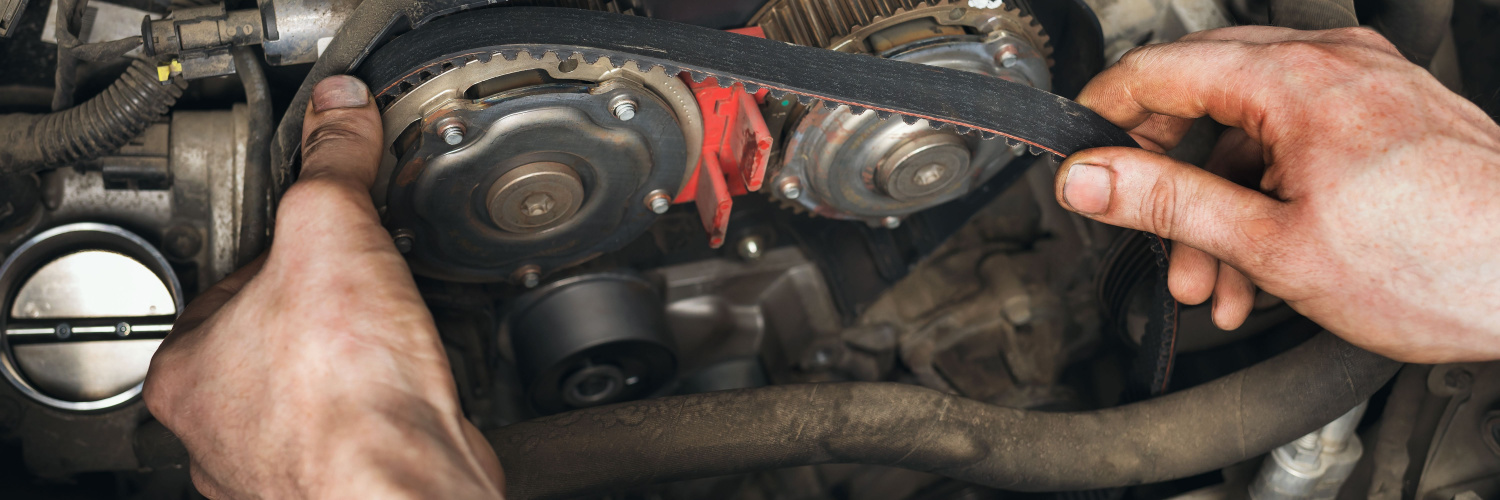Timing Belt Replacement in Massachusetts

What is a Timing Belt, and Why is it Important for Your Vehicle’s Engine?
Your vehicle’s engine is a complex piece of machinery with numerous moving parts that need to operate in perfect synchronization. The timing belt is a toothed rubber belt that connects the camshaft and crankshaft of your engine, ensuring that they rotate in perfect harmony.
The timing belt is important because it controls the precise opening and closing of the engine’s valves, allowing for the optimal intake of air and release of exhaust gases. Without a functioning timing belt, your engine would be prone to catastrophic failure, potentially leading to costly repairs.
Are There Specific Mileage Markers or Manufacturer Recommendations for Timing Belt Replacements?
There are specific guidelines for timing belt replacement, and they vary depending on your vehicle’s make and model. It’s essential to consult your owner’s manual or check with a qualified mechanic to determine the manufacturer’s recommendations for timing belt replacement intervals. However, a common rule of thumb is to replace your timing belt every 60,000 to 100,000 miles, but this can vary.
Many automakers provide specific mileage or time intervals for timing belt replacement in their maintenance schedules. Following these recommendations is important to prevent the risk of a faulty timing belt causing engine damage.
What are the Warning Signs that Indicate Your Timing Belt Needs Replacement?
Timing belt replacement is a critical maintenance item, and it’s essential to be aware of the warning signs that signal the need for replacement:
Squealing Noise: If you hear a high-pitched squealing noise coming from the engine area, it may indicate a loose or worn-out timing belt.
Visible Cracks or Damage: Inspect your timing belt for visible signs of wear, such as cracks, fraying, or missing teeth. Any damage should be addressed promptly.
Engine Misfires: A faulty timing belt can lead to misfires in your engine, causing it to run unevenly or stall.
Poor Engine Performance: A loss of power or decreased fuel efficiency may be due to an improperly functioning timing belt.
Engine Vibration: Excessive engine vibration could indicate a problem with the timing belt, affecting the balance of the engine’s components.
Check Engine Light: If your vehicle’s onboard computer detects timing-related issues, it may trigger the check engine light.
Excessive Exhaust Smoke: A damaged timing belt can lead to poor combustion, resulting in excess smoke from the exhaust.
What Happens if a Timing Belt Breaks or Fails While Driving?
A timing belt failure can have severe consequences for your engine, potentially leading to significant damage and costly repairs. Here’s what can happen if a timing belt breaks or fails while driving:
Engine Stalls: When the timing belt breaks, the camshaft and crankshaft lose synchronization, causing the engine to stall immediately. This can be particularly dangerous if it occurs while driving, as it can lead to loss of control.
Valve and Piston Collision: In an interference engine, where the valves and pistons occupy the same space in the combustion chamber but operate independently, a timing belt failure can result in a collision between the two. This can cause extensive damage to the engine’s components.
Costly Repairs: Repairing an engine that has suffered damage due to a timing belt failure can be expensive. It may require the replacement of valves, pistons, and even the engine itself in extreme cases.
Towing and Downtime: If your timing belt breaks while driving, you’ll likely need a tow to the nearest auto shop. This can result in extended downtime and inconvenience.
Preventable Maintenance: Timing belt replacement costs are relatively modest compared to the potential expenses of repairing a damaged engine. Regular timing belt service is a preventive measure to avoid these costly breakdowns.
The Impact of Extreme Temperatures
Massachusetts experiences a wide range of weather conditions throughout the year, from sweltering summers to freezing winters. These extreme temperatures can accelerate the wear and tear on your timing belt. In high heat, the rubber can deteriorate more rapidly, while freezing temperatures can make it brittle, as extreme temperatures can affect its lifespan.
Timing Belt or Chain: Know the Difference
Some vehicles use timing chains instead of timing belts. Timing chains are more durable and typically last longer than belts. However, they can still require replacement, and the process can be more complex. If you’re unsure whether your vehicle has a timing belt or chain, consult your owner’s manual or speak to one of our experts at Hogan Tire & Auto.
Timing Belt Replacement Costs
While timing belt replacement is an important maintenance item, it’s also essential to consider the costs involved. The price can vary depending on the make and model of your vehicle, but the expense is minor compared to the potential damage caused by a faulty timing belt.
Stop and Go Driving: Consider Your Habits
Your driving habits can also impact the lifespan of your timing belt. If you frequently engage in stop-and-go driving or drive in heavy traffic, the constant acceleration and deceleration can put extra stress on the timing belt. Following manufacturer recommendations for timing belt replacement and being aware of warning signs can help you avoid the inconvenience and expense of a timing belt failure.
Contact Hogan Tire & Auto Today
At Hogan Tire & Auto in Massachusetts, we’re here to provide expert timing belt replacement services to keep your vehicle running smoothly in all weather conditions. Don’t wait until it’s too late – schedule your timing belt service with your local store today!

